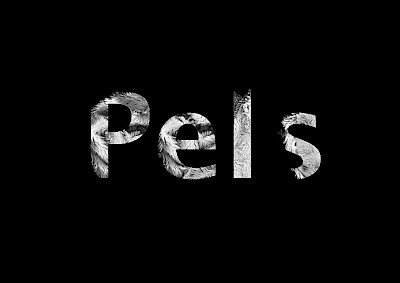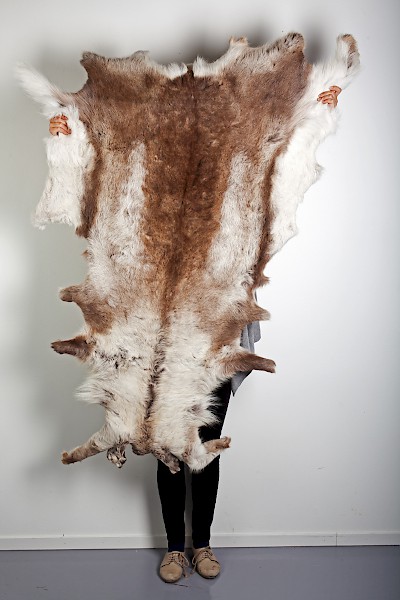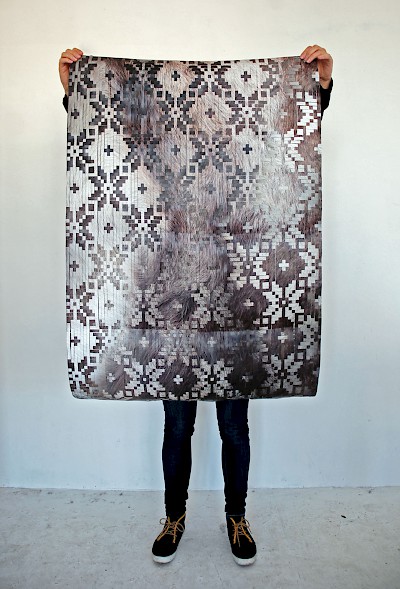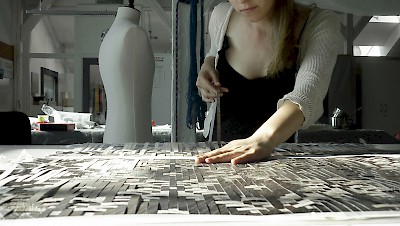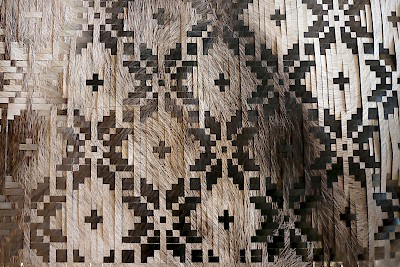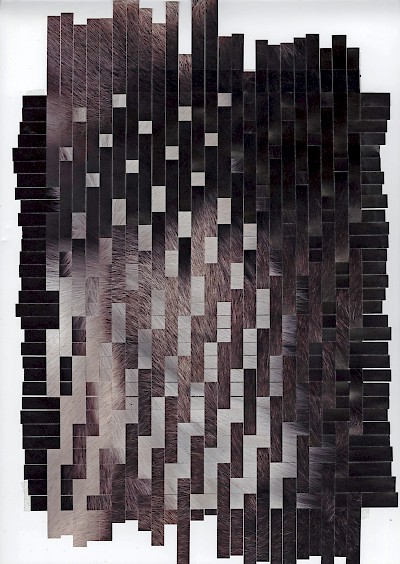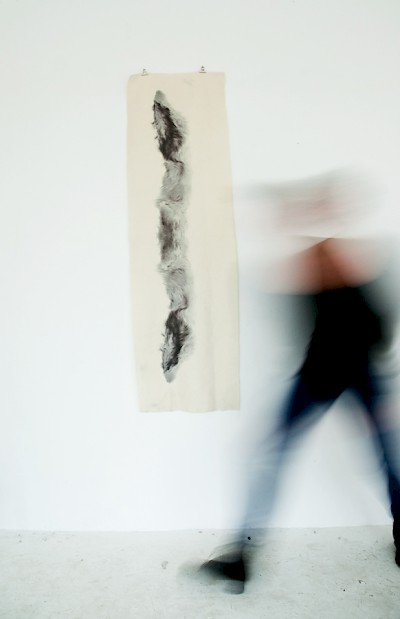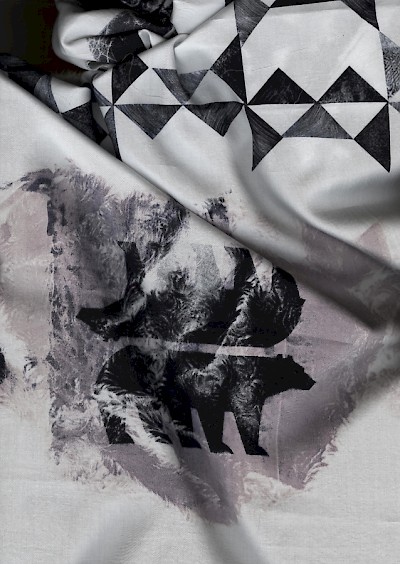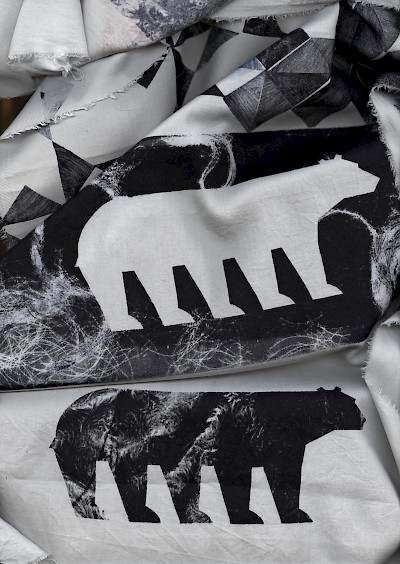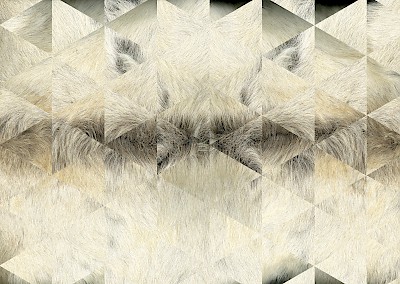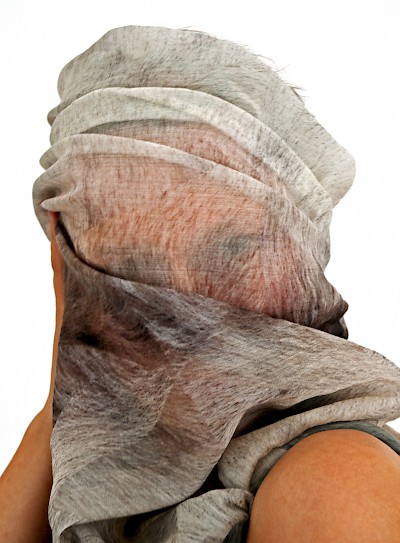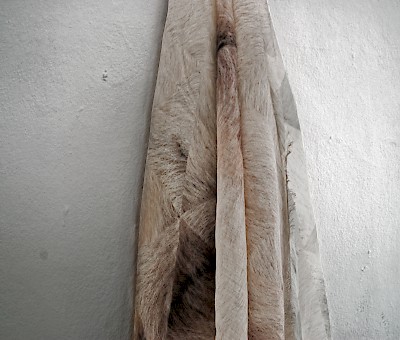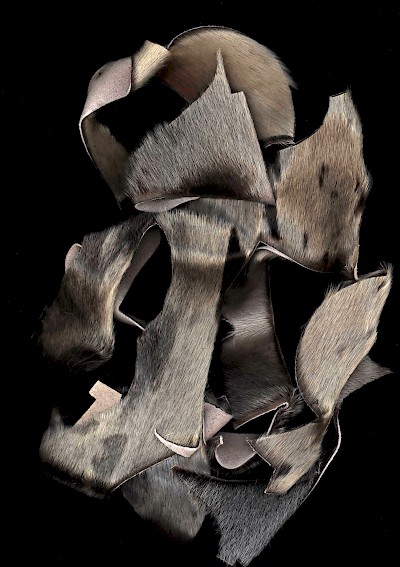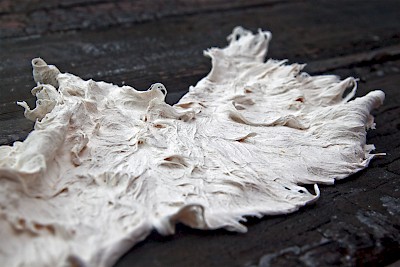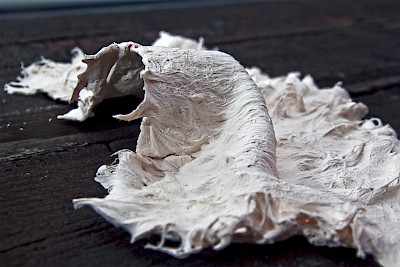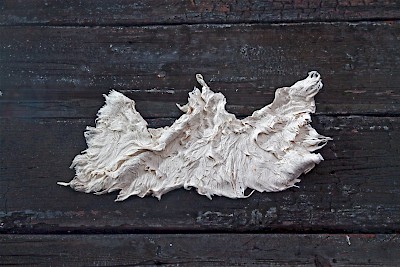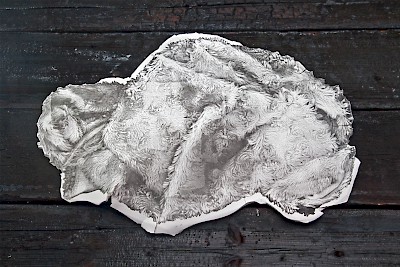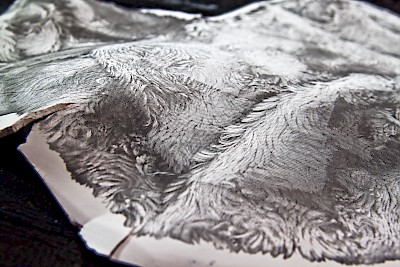Ever since human beings existed, fur was used as garment. Since the dawn of civilization the human being tries to produce precious fabrics and tissues with the help of countless different modern techniques. But none of them is so substantial and fascinating like the hide of an animal.
To catch the smooth structure and the delicate color gradients of fur I scanned it first. The resulting pictures were printed on paper, cut into slices and woven afterwards. Exemplarily I used a pattern which can be found in many different cultures (the eight-leaved rose, also known as “norwegian Pattern“). In this way I could combine a traditional technique and historical patterns with the material fur regardless it‘s haptic qualities.
In my mind, fur was always linked to luxury and sophisticated women but also as an object of everyday use, which one can find in nearly every household. At the same time fur is one of the most discussed materials, because its production kills animals. In my eyes fur is a traditional material full of antitheses.
To emphasize the contrast, the organic fur should counteract to something unnatural or rigid. I discovered that porcelain is the most suitable medium for me. I started to dip fur into liquid porcelain. As a result of the moisture caused by the porcelain liquidity the fur becomes wet and freezes in this shape after a while. Into the kiln, at temperatures around 1200° C, the hair burns away and leaves a stiff bonelike porcelain shell- inflexible, cold an heavy. The outcome is a fragile piece of porcelain that can easily break by touching it. The resulting objects represent my point of view because they are changing the qualities while I work with them just like the fur changes it‘s innocent look when you start to deal with the production process.
The results of my work are fragile porcelain objects and large-sized weave works. They represent the central idea of my concept, by combining asthetics with critical questions about the topic fur and power.

